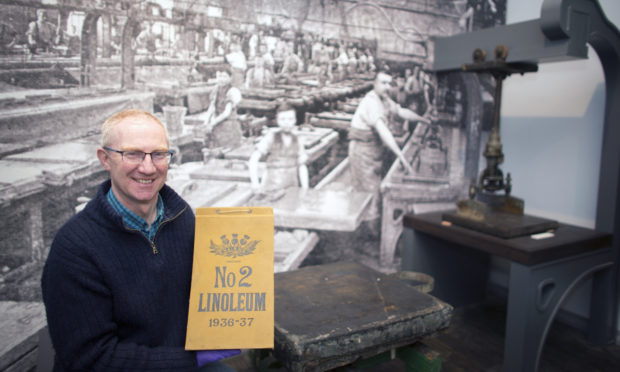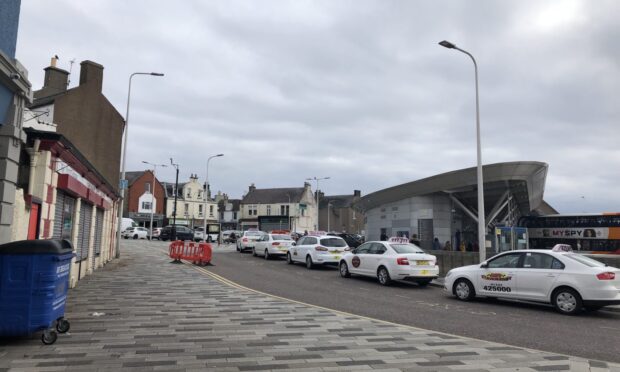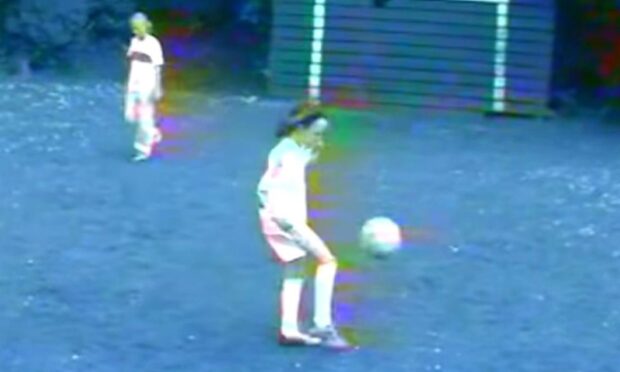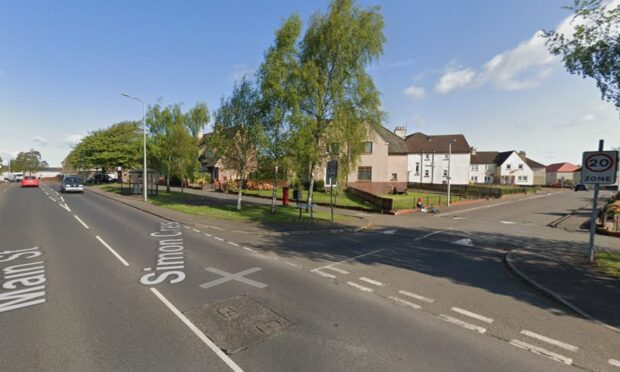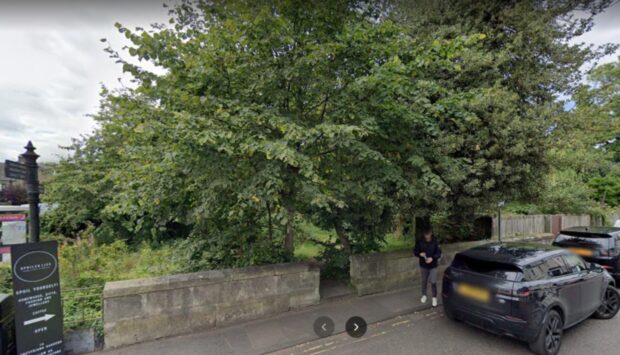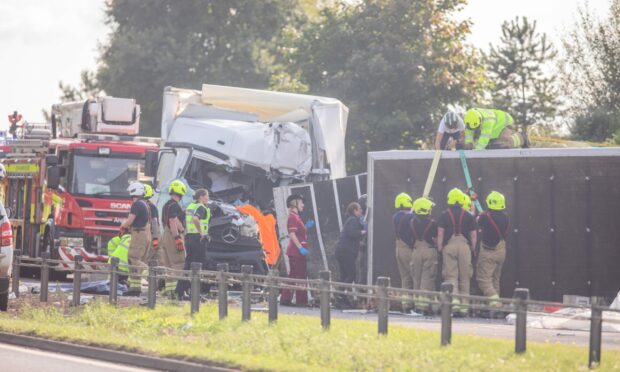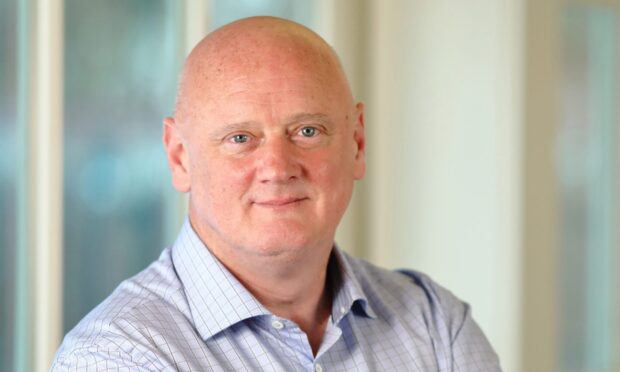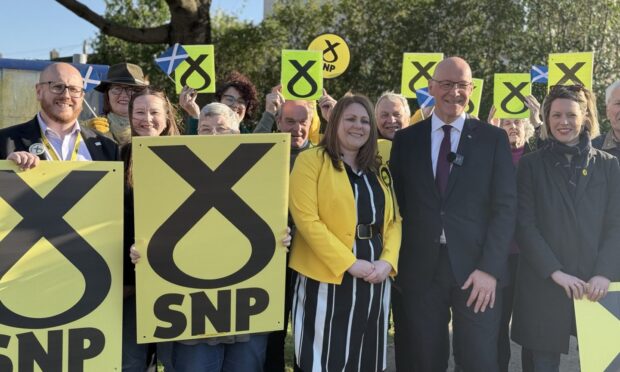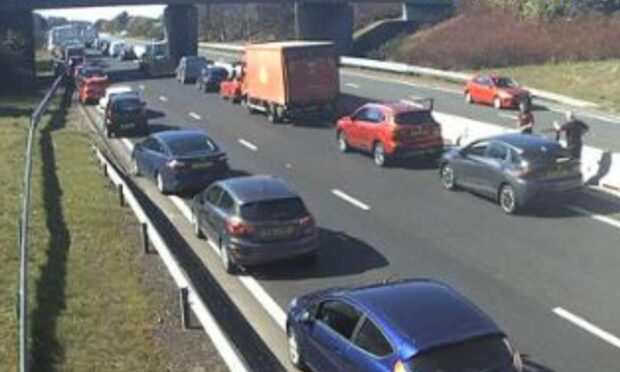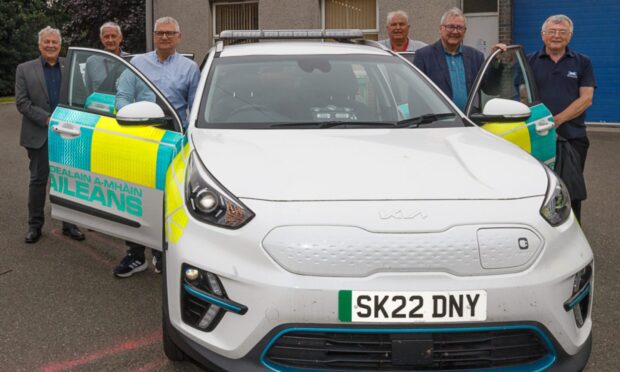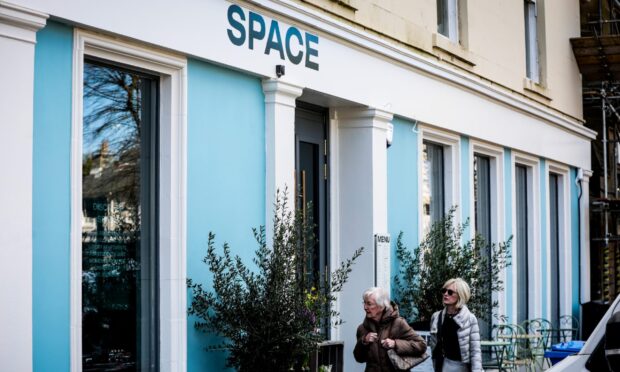An appeal has been launched to find the whereabouts of a mystery artwork thought to have been created in Kirkcaldy during the heyday of the town’s linoleum production.
The detailed mural, which stands around 10 feet high by 15 feet wide, depicts King Charles II surveying the Great Fire of London and was created using different colours of lino put together in a marquetry style of production.
The urge to know more about the artwork was triggered after Ian Stevenson, a member of Kirkcaldy Civic Society, came across photos of the mural while visiting his mother at the Ostlers House care home in the town.
Despite months of research, Ian has been unable to find out who produced the highly decorative piece or where it is now.
“I’ve been intrigued by the photographs since I first saw them but despite some detective work, I’m no nearer tracking it down,” Ian said.
“Two of the pictures, probably promotional photos, show two ladies admiring the scene and from the fashions it points to the 1950s.
“The other photo is of Forth House in Abbotshall Road in Kirkcaldy, once the head office of linoleum manufacturer Barry Ostlere and Shepherd.”
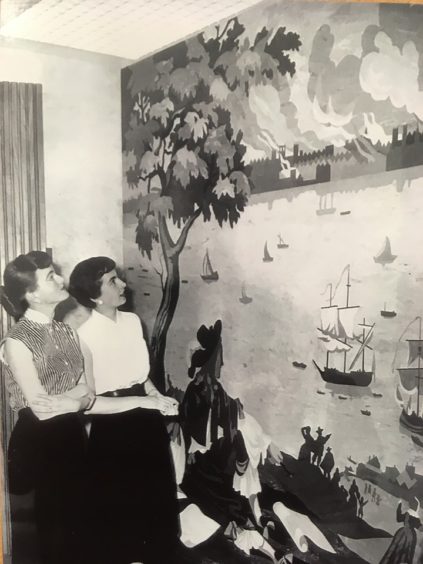
Having worked in Fife Council’s planning department which was based at Forth House, Ian is certain the mural was not installed at that building and is convinced it was made as a commission for a London based client.
“A theory is that it is linked to the fire in 1666. Could the mural have been a commission in 1956 to celebrate an anniversary of the disaster?” said Ian.
“1966 would obviously have made more sense but what doesn’t fit is the costumes.
“It’s difficult to conceive of a reason why they would’ve gone to such an elaborate construct.
“It’s certainly a showcase for the high craftsmanship standards of the day and it’s a unique piece of Kirkcaldy’s industrial history which may well still be on show and admired.
“But where?”

Similarly, Gavin Grant from Kirkcaldy Galleries and Museum, a leading expert on the Lang Toun’s rich history of linoleum manufacturing, is also keen to know more.
He said: “While I’m sure it would have been a costly item to create, such commissions were not uncommon and I would expect, given expert craftmanship that was available at the time, it’s likely to have been produced by one of Kirkcaldy’s leading manufacturers.
“However, I’ve never come across any reference to any Great Fire of London commission and I can’t find any reference to it within Fife Cultural Trust’s extensive archive.”
Ian is now calling on anyone who may have worked on or remembers such a mural or knows the females in the promotional photographs to get in touch in the hope that the artwork can be found.
Contact Ian via email at kirkcaldycivicsociety@gmail.com.
